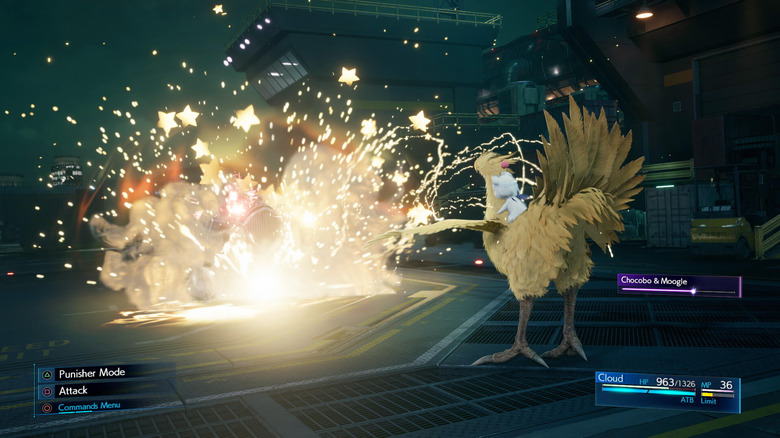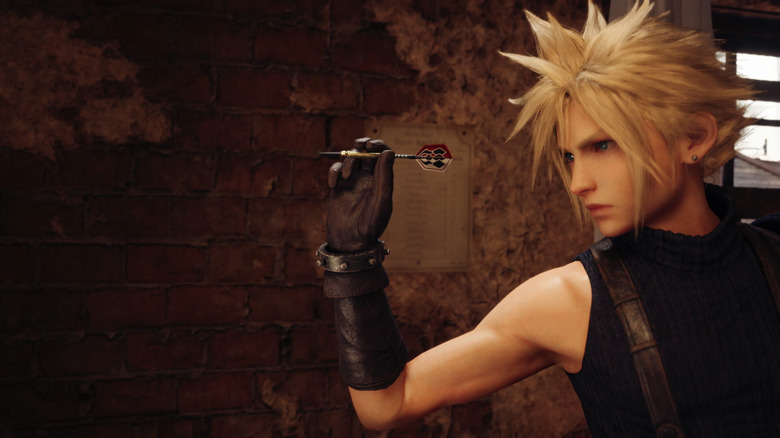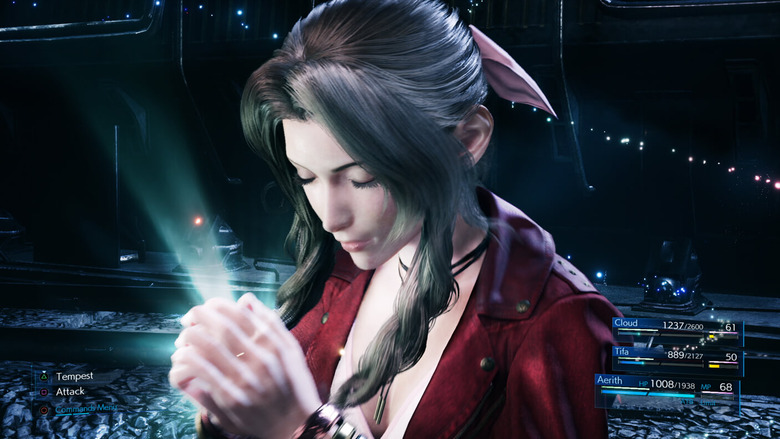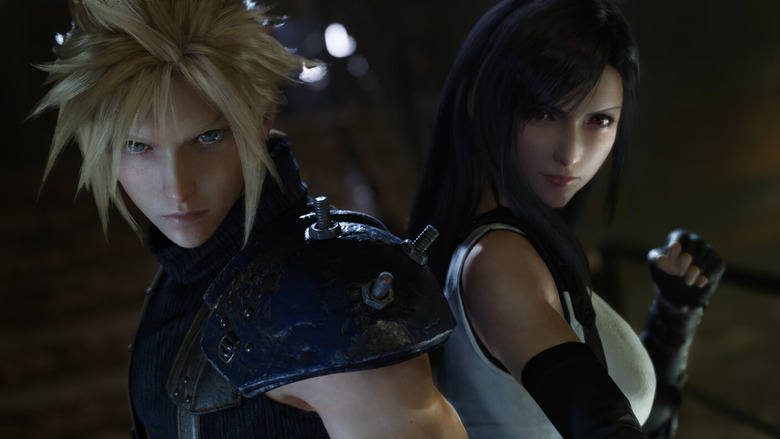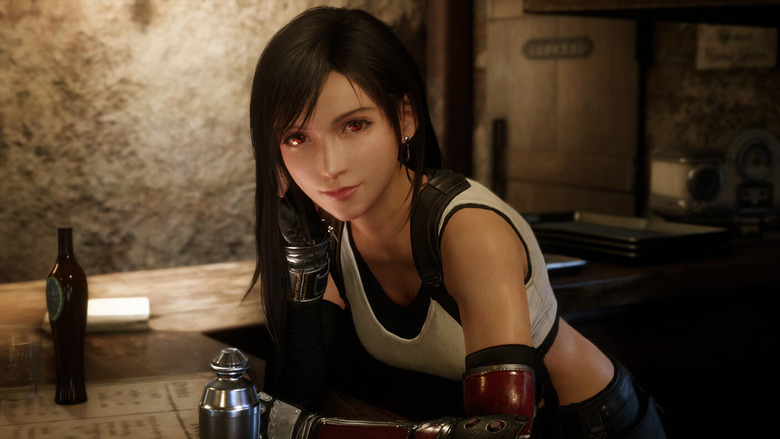Improvements We Hope To See In The Final Fantasy 7 Remake Sequel
Final Fantasy 7 Remake is a thrilling and mesmerizing revisit to the world of Midgar. The characters we had to imagine in the past are now fully realized. Battles fought back in 1997 are overhauled with breath-taking creativity. The remake is sure to overwhelm returning fans with nostalgia with its lovingly reimagined world. For newcomers, it introduces you to a cast of endearing characters you'll wish you could more time knowing beyond the roughly 25- to 30-hour playtime.
But FF7 Remake is not without its flaws. While much of it is refined thanks to unmatched production values bleeding across every frame, some stylistic choices and pacing issues bog this otherwise refined adventure. And given it only covers the first chapter of the original 1997 classic, we hope to see these improvements made in the games to come. And don't worry, this run down is spoiler-free.
Pacing issues
This remake expands the opening 4 hours or so into an entire game. Most playthroughs reported around 30 to 40 hours of playtime, but in our experience, we could beat the game under 30 hours, completing most side missions.
And even that felt long. FF7 Remake pads out a brief story with missions too long for its own good. Too often do players find themselves running back and forth in maps, turn on switches to gain access to different parts of the level. These moments rarely further the plot or understanding of characters. It starts to weigh down on the narrative momentum especially towards the climax of the game, when we are made to activate gate after gate to progress through the chapter. The excitement built in the previous climatic chapter petered out.
The remake's backstory about the other AVALANCHE members, especially Jessie's, are certainly welcome. But more discipline is needed to bring urgency and a forward momentum to the plot.
Side missions
If you're coming in right after playing The Witcher 3 or Red Dead Redemption 2, you're going to be sorely disappointed by FF7 Remake's uninspired side quests. Known as "Odd Jobs", these missions are culprits for the game's bloated run time. Some missions offer neat upgrades, character moments or material, but these moments are few. It doesn't justify running around finding cats in the video, or helping an orphanage look for children who are late for class.
And on a narrative level, many of the Odd Jobs don't seem like task the cold and brooding mercenary Cloud Strife would ever indulge. While the plot shows Cloud's warming up to the world around him and putting talk of money aside, too quickly do we find Cloud chasing after cats, donning dresses and doing mundane things for the Midgar townsfolk.
Level design
Many of levels in FF7 Remake are gorgeous to look at. Few games are rendered in such detail, from the Sector 5 slums, Aerith's house and the imposing backdrop plate looming above the slums. Views are just as stunning from above. You just can't help but look down at the slums below, baked in a beautiful sunset.
The same care isn't consistent with its level design. Besides the hub areas, Cloud and the gang constantly find themselves in drab underground locations with copy-and-paste sections, such as the train tunnels, the sewers and the maintenance deck on the plate. These extended mission sequences are a nice touch for returning fans of the original who last saw these locales on the PlayStation 1, but not enough happens in between to make the stay welcome, making gameplay tedious.
Movement within these levels can be a chore too. For a SOLDIER who can leap off trains and perform all sorts of stunts we see in cutscenes, Cloud is stubbornly unacrobatic in gameplay and traversal. The journey is often stalled by rubble or some uncreative excuse to add five more minutes to your game time as you make your way around an obstacle. "Platforming" sequences like climbing monkey bars or jumping across chandeliers don't offer any sense of challenge as characters can only jump when you align them to the "jump" icons lit up on the floor, breaking momentum.
But some levels do offer a nice touch of nostalgia. Climbing the many stairs of the support pillar to get to the top brings players back to these dramatic moments on the the PS1. Just like the original, players run up almost all the steps, but it's interjected with interesting character moments and important cut scenes to make it all worthwhile.
Script problems
There is one heartfelt exchange between Tifa and Cloud that is sure to stick with players. After a devastating turn of events, she embraces Cloud and pours out her heartbreak. The dialogue is minimal but well-weighted for a poignant moment. We wish the same level of control was evident in the other cut scenes, many awkward or over-dramatic to cringe-worthy effect.
Besides the occasional cut-scene rendered in stunning detail, in-game dialogue has too many gasps, pauses and overdrawn exchanges. The drama is drawn out, and conversations often become too slow or unconvincing. Why is Cloud so taken aback every time a girl asks for a high-five? Why do all characters seem to stagger when being asked a question? Why does Barrett need to argue with the same Shinra-sympathising top-sider on the train each time, giving away their cover?
Plenty of good
None of this is to say FF7 Remake is not a good game. You'll be hard pressed to find a game with better production values, from its graphics, music and overall art direction. Characters remain as endearing as ever.
Final Fantasy 7 Remake stands as one of the most memorable experiences of this console generation that should not be missed. But it's not perfect. And given we will probably need to wait a long time again for the FF7 Remake sequel, which will likely be on next-gen consoles, there's plenty of time here to get it all right.

